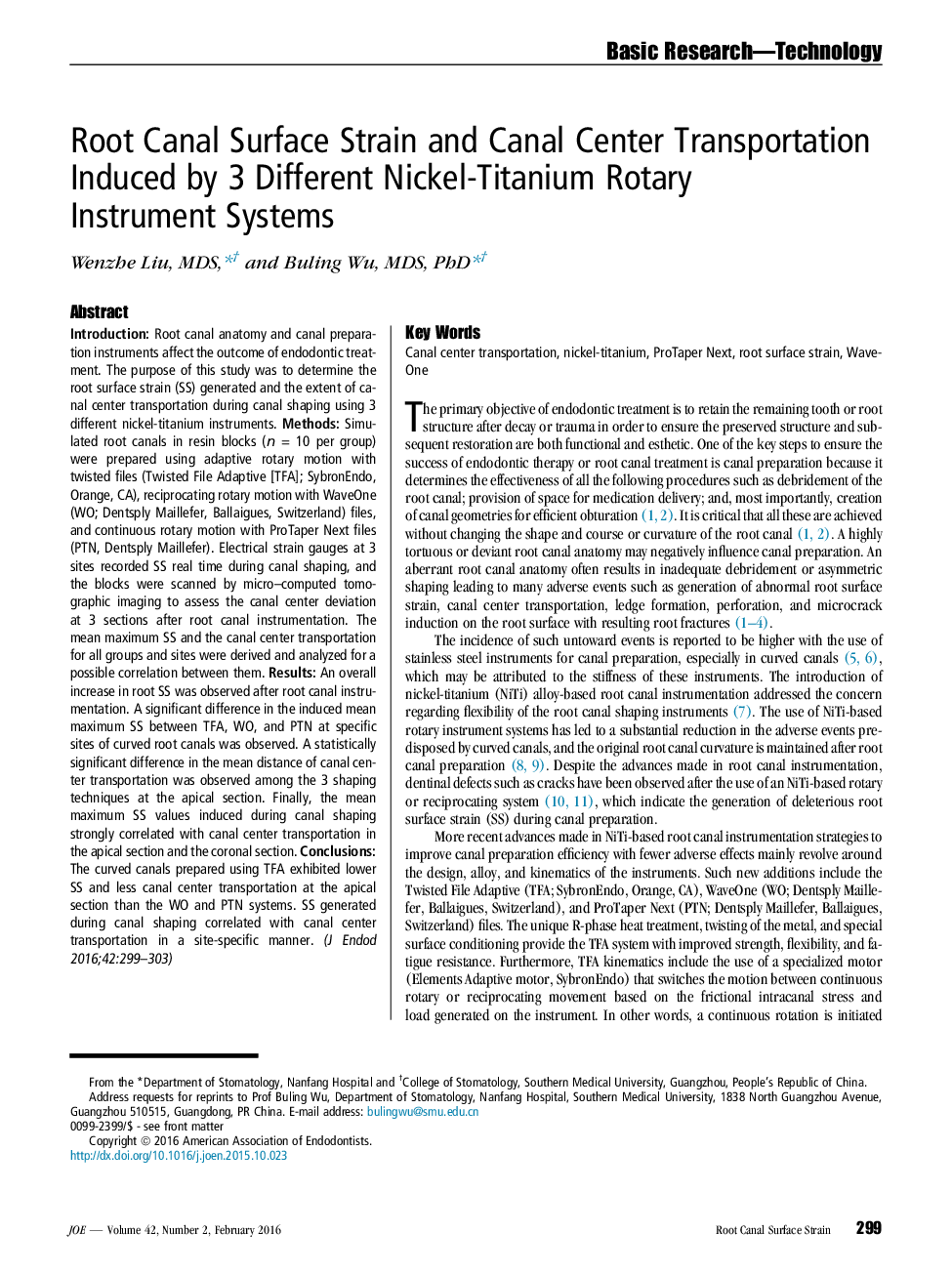| کد مقاله | کد نشریه | سال انتشار | مقاله انگلیسی | نسخه تمام متن |
|---|---|---|---|---|
| 3150054 | 1197492 | 2016 | 5 صفحه PDF | دانلود رایگان |
• Root canal instrumentation increases strain on root surface.
• Twisted File Adaptive induced lower strain and less canal center transportation than WaveOne and ProTaper Next.
• Strain generated during canal shaping correlated with canal center transportation.
IntroductionRoot canal anatomy and canal preparation instruments affect the outcome of endodontic treatment. The purpose of this study was to determine the root surface strain (SS) generated and the extent of canal center transportation during canal shaping using 3 different nickel-titanium instruments.MethodsSimulated root canals in resin blocks (n = 10 per group) were prepared using adaptive rotary motion with twisted files (Twisted File Adaptive [TFA]; SybronEndo, Orange, CA), reciprocating rotary motion with WaveOne (WO; Dentsply Maillefer, Ballaigues, Switzerland) files, and continuous rotary motion with ProTaper Next files (PTN, Dentsply Maillefer). Electrical strain gauges at 3 sites recorded SS real time during canal shaping, and the blocks were scanned by micro–computed tomographic imaging to assess the canal center deviation at 3 sections after root canal instrumentation. The mean maximum SS and the canal center transportation for all groups and sites were derived and analyzed for a possible correlation between them.ResultsAn overall increase in root SS was observed after root canal instrumentation. A significant difference in the induced mean maximum SS between TFA, WO, and PTN at specific sites of curved root canals was observed. A statistically significant difference in the mean distance of canal center transportation was observed among the 3 shaping techniques at the apical section. Finally, the mean maximum SS values induced during canal shaping strongly correlated with canal center transportation in the apical section and the coronal section.ConclusionsThe curved canals prepared using TFA exhibited lower SS and less canal center transportation at the apical section than the WO and PTN systems. SS generated during canal shaping correlated with canal center transportation in a site-specific manner.
Journal: Journal of Endodontics - Volume 42, Issue 2, February 2016, Pages 299–303
